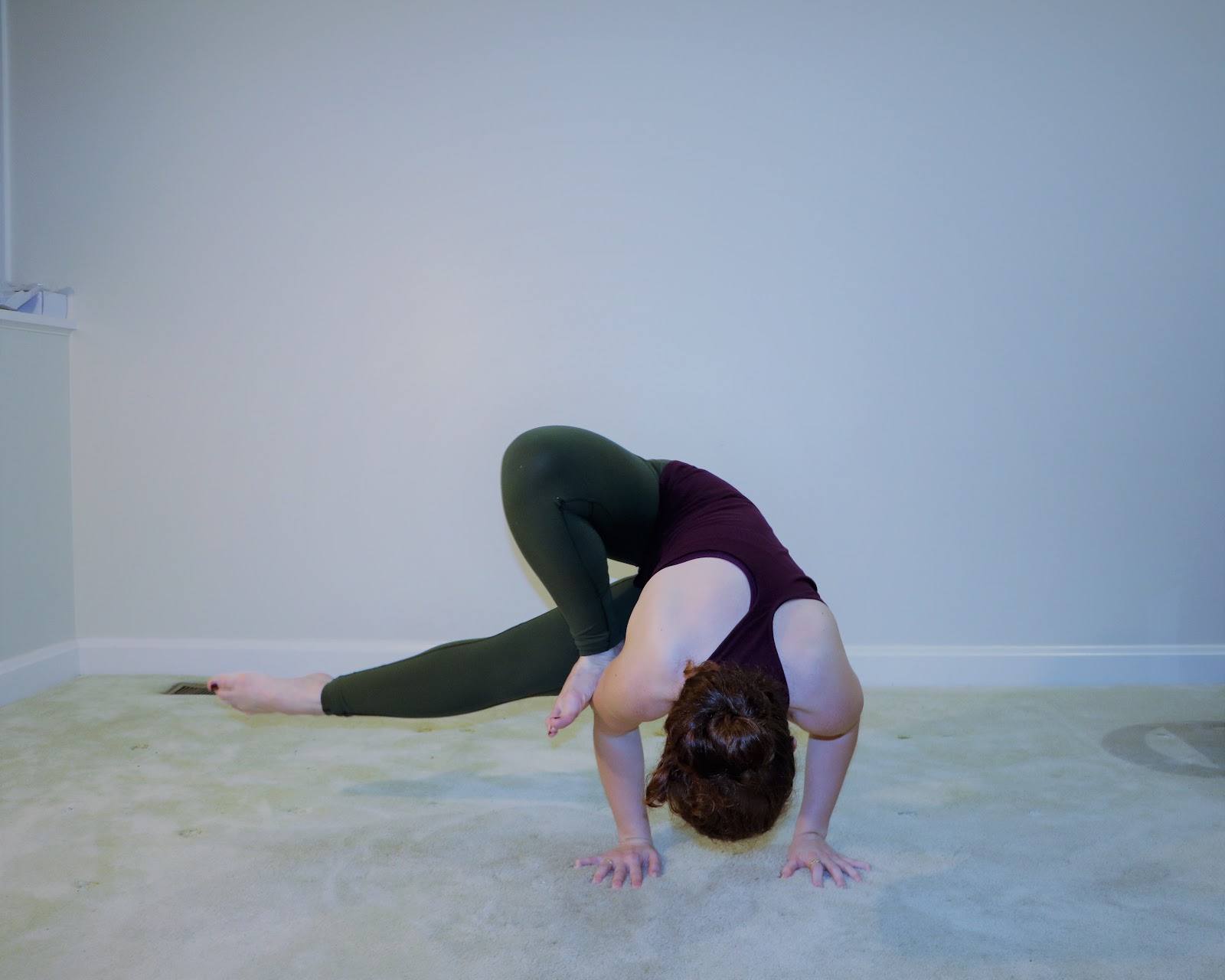
POSE TYPE
Arm Balance, Hip Opener
POSE CATEGORY
Twist
Setup and Key Actions
From tadasana (mountain pose), come into a “half chair” or “gentleman’s chair” pose by flexing your left foot, crossing your left ankle over your right thigh, and sitting your hips back evenly like you would for chair pose.
Bring your fingertips to the floor in front of you. Keep your left foot (especially the pinky-toe side) flexed, and keep your hips level. Engage your low belly.
From here, come to a deep squatting position, lifting your right heel away from the floor.
Inhale, lengthen your spine, and on an exhale, walk your fingertips over to the right for a twist, bringing your fingertips to the floor, bringing your left upper arm into contact with the sole of your left foot, and walking your right fingertips enough to the right so that your hands are shoulder-distance apart or just slightly wider. Be sure that your breath stays smooth and even as you continue working your way into the twist, and working the sole of your left foot high onto your upper left arm (the higher your foot is, the easier the arm balance will be). Back out of the pose if your breath becomes shaky or jerky. It’s okay if your foot doesn’t make it all the way up to your armpit, but do make sure that your foot is above (not on) your left elbow before moving on. You may find it helpful to lift your hips a little higher so you can gain some leverage.
From there, start to shift some of your weight forward into your hands, planting them on the floor, and bending your elbows straight back (not out to the sides), as you would for chatuaranga As you bend your elbows and shift forward into the arm balance, stay broad across your collarbones, and watch that your shoulders don’t dip below your elbows.
As you shift your weight forward, you may find that you can float your right foot up off of the floor.
Maintain your chaturanga-like arm position, and avoid resting your right hip on your right arm.
From here, you can extend your right leg out to the left (flex your right foot). Because your right leg is pressing against your left outer ankle/foot, it keeps the foot from sliding down.
Either gaze slightly forward (keeping the back of your neck long), or you can turn your head to look at your toes.
Modifications
If balance is a challenge in the initial setup, try this:
Take two yoga blocks at their lowest heights and “stair-step stack” them on top of each other so that a little bit of the top of the bottom block is showing—enough space for you to rest your heel on.
Sit on the top block, and come into a seated “figure-four” position with your left ankle crossed over your right thigh, left foot flexed (your foot should be off of your thigh completely), and left shin straight across.
Bring your right heel onto the exposed top of the bottom block; come onto the ball of your right foot, and keep your right toes on the floor.
You can work your way into the twist from here without having to worry so much about balancing.



